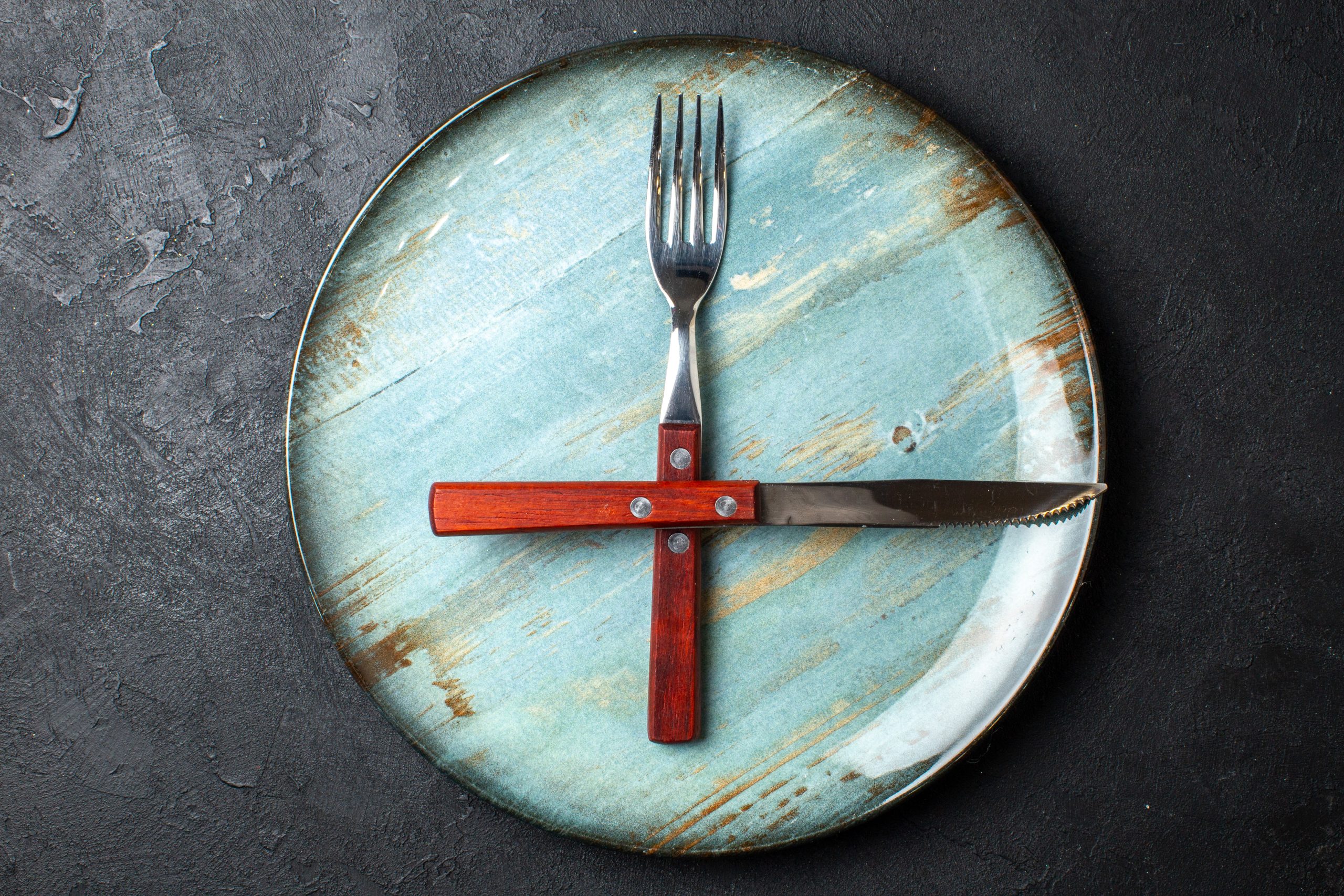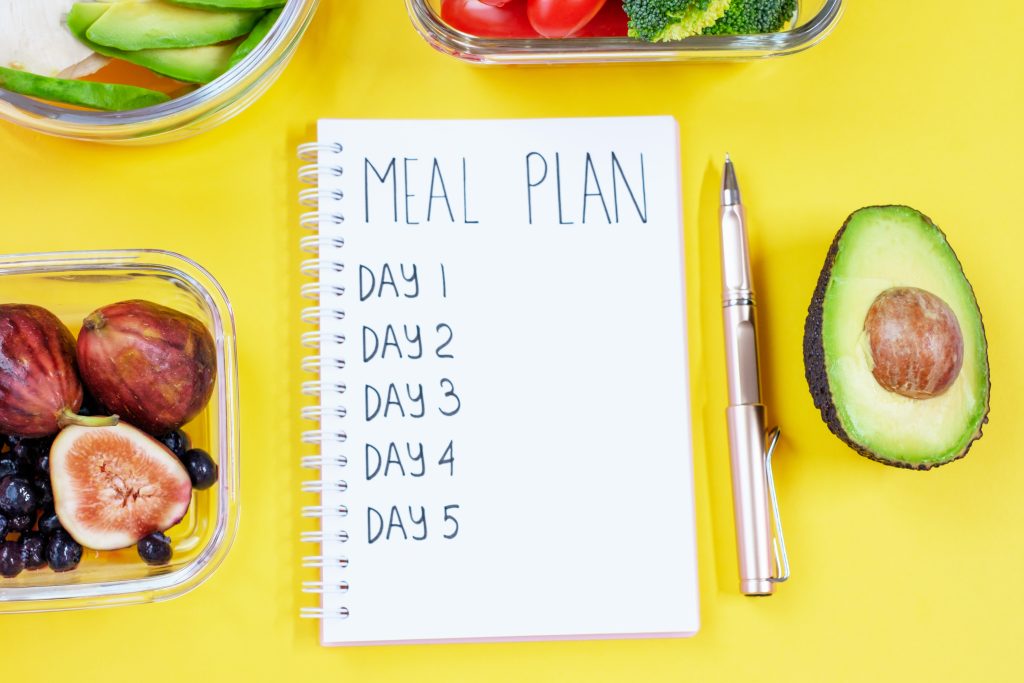7-Day Meal Plan for Intermittent Fasting: A Complete Weight Loss Guide
All Articles, Intermittent Fasting
Starting a 7-day meal plan for intermittent fasting might be an exceptionally successful approach for achieving your weight-loss targets. Intermittent fasting is alternating periods of eating and fasting, which can boost metabolism, lower appetite, and facilitate long-term weight loss. This article will cover every aspect of creating a successful intermittent fasting meal schedule, analyze the advantages of various fasting techniques, and offer useful advice and recipes to assist with your journey. Whether you are new to intermittent fasting or want to maximize your present program, this thorough guide will provide all you need to be successful.
Table of Contents
- Introduction to Intermittent Fasting
- The Benefits of a 7-Day Meal Plan for Intermittent Fasting
- Structuring Your 7-Day Meal Plan for Intermittent Fasting
- Important Notes on Intermittent Fasting
- Recipes for Intermittent Fasting
- Managing Intermittent Fasting for Over 50
- FAQs about Intermittent Fasting
- The Bottom Line
- References
Introduction to Intermittent Fasting
Intermittent fasting is becoming increasingly popular as a weight loss and metabolic health strategy. To control insulin levels, boost fat burning, and cut calories overall, a 7-day meal plan for intermittent fasting alternates between eating and fasting intervals. This method is flexible enough for many people to fit different diets and lifestyles, therefore accommodating their choices.
You may establish a healthy eating routine that helps you lose weight and keep it off by learning about intermittent fasting. Selecting the appropriate fasting technique, organizing healthy meals, and maintaining regularity with your regimen can help you to succeed.
The Benefits of a 7-Day Meal Plan for Intermittent Fasting
Understanding the 16/8 Method for Weight Loss
The 16/8 method is a common intermittent fasting approach that entails fasting for 16 hours and eating during an 8-hour window. Starting with this simple and easy-to-learn technique will help beginners get going. Some people find that drinking water, tea, or coffee during their fasting periods helps them feel full on fewer calories and keeps them from being too dehydrated.
The 16/8 method lowers inflammation, increases fat burning, and improves insulin sensitivity among other things. Reducing your eating window helps you to automatically cut your calorie intake, which will enable slow but steady weight loss. This approach also lets you be flexible with meal time, thereby allowing you to easily integrate it into your regular routine.
Exploring the 20/4 Intermittent Fasting Approach
The 20/4 intermittent fasting approach can be appropriate for anyone preferring a more intense fasting schedule. In this method, you eat every four hours and fast for twenty. Although it requires more discipline, it can cause major weight loss and metabolic advantages. Eating meals high in nutrients that offer enough protein, good fats, and important minerals and vitamins is vital during the eating window.
The 20/4 intermittent fasting strategy can increase energy levels, assist with quicker weight loss, and improve mental clarity. Still, you should pay close attention to your body and make sure you are getting enough nutrients to support your general wellness. A healthcare professional’s advice and a gradual easing into this fasting method can help you get the best results.
Structuring Your 7-Day Meal Plan for Intermittent Fasting
Day-by-Day Breakdown
Here’s a day-by-day breakdown of a 7-day meal plan for intermittent fasting with the 16/8 method:
- Day 1:
- Breakfast (10:00 AM): Greek yogurt with berries and chia seeds
- Lunch (2:00 PM): Quinoa salad with mixed vegetables and grilled chicken
- Dinner (6:00 PM): Baked salmon with asparagus and sweet potatoes
- Snack (optional): Apple slices with almond butter
- Day 2:
- Breakfast (10:00 AM): Smoothie with spinach, banana, and protein powder
- Lunch (2:00 PM): Lentil soup with a side of mixed greens
- Dinner (6:00 PM): Stir-fried tofu with broccoli and brown rice
- Snack (optional): Handful of nuts
- Day 3:
- Breakfast (10:00 AM): Oatmeal topped with fresh fruit and flax seeds
- Lunch (2:00 PM): Chickpea salad with tomatoes, cucumbers, and feta cheese
- Dinner (6:00 PM): Grilled chicken with quinoa and roasted vegetables
- Snack (optional): Carrot sticks with hummus
- Day 4:
- Breakfast (10:00 AM): Avocado toast on whole grain bread with a side of fruit
- Lunch (2:00 PM): Turkey and vegetable wrap with a side of mixed greens
- Dinner (6:00 PM): Shrimp stir-fry with snap peas and bell peppers
- Snack (optional): Greek yogurt with honey
- Day 5:
- Breakfast (10:00 AM): Smoothie bowl with almond milk, berries, and granola
- Lunch (2:00 PM): Black bean and corn salad with a lime vinaigrette
- Dinner (6:00 PM): Beef stir-fry with broccoli and brown rice
- Snack (optional): Sliced apple with peanut butter
- Day 6:
- Breakfast (10:00 AM): Cottage cheese with pineapple and chia seeds
- Lunch (2:00 PM): Spinach and feta stuffed chicken breast with a side of quinoa
- Dinner (6:00 PM): Baked cod with a side of roasted Brussels sprouts
- Snack (optional): Handful of mixed nuts
- Day 7:
- Breakfast (10:00 AM): Smoothie with kale, mango, and protein powder
- Lunch (2:00 PM): Grilled chicken Caesar salad
- Dinner (6:00 PM): Zucchini noodles with marinara sauce and turkey meatballs
- Snack (optional): Greek yogurt with blueberries
Key Components of an Effective Fasting Meal Plan
When structuring your weight loss meal plan intermittent fasting, consider including the following key components:
- Nutrient-Dense Foods: Ensure your meals are rich in essential vitamins, minerals, and macronutrients to support overall health.
- Hydration: Drink plenty of water, herbal teas, and black coffee to stay hydrated and curb hunger.
- Balanced Macronutrients: Include a balance of protein, healthy fats, and complex carbohydrates in your meals to maintain energy levels and support muscle maintenance.
- Consistency: Stick to your fasting and eating windows consistently to maximize the benefits of intermittent fasting.
Important Notes on Intermittent Fasting
Intermittent fasting is not a one-size-fits-all solution. Selecting a fasting technique requires careful consideration of your lifestyle, quality of health, and personal preferences. It is advisable to consult with a healthcare professional prior to commencing an intermittent fasting weight loss program to guarantee its safety and efficacy.
Hydration is essential during fasting periods. Black coffee, herbal teas, and lots of water will help to keep energy levels high and lower appetite. Furthermore, remaining active through regular exercise might enhance the benefits of intermittent fasting by encouraging muscle maintenance and increasing metabolism.
Recipes for Intermittent Fasting
Incorporating recipes for intermittent fasting into your meal plan might make the experience more fun and sustainable. Here are some great and encouraging meal ideas:
Breakfast Ideas
- Greek Yogurt Parfait:
- Ingredients: Greek yogurt, mixed berries, honey, granola
- Calories: Approximately 250
- Green Smoothie:
- Ingredients: Spinach, banana, almond milk, protein powder
- Calories: Approximately 300
Lunch Ideas
- Quinoa Salad:
- Ingredients: Quinoa, mixed vegetables, grilled chicken, lemon vinaigrette
- Calories: Approximately 400
- Lentil Soup:
- Ingredients: Lentils, carrots, celery, onions, vegetable broth
- Calories: Approximately 350
Dinner Ideas
- Baked Salmon:
- Ingredients: Salmon fillet, asparagus, sweet potatoes
- Calories: Approximately 450
- Stir-Fried Tofu:
- Ingredients: Tofu, broccoli, bell peppers, soy sauce
- Calories: Approximately 400
Managing Intermittent Fasting for Over 50
Intermittent fasting can be especially advantageous for people over 50 since it helps with weight management and metabolic health. If you are over 50, these ideas will help you implement intermittent fasting into your schedule:
Nutrient-Dense Foods
Ensuring you are getting enough vitamins and minerals requires concentrating on meals high in nutrients. Add to your meals nutritious grains, lean proteins, leafy greens, and healthy fats.
Hydration and Electrolytes
Particularly as you get older, you should keep hydrated. To keep balance and avoid dehydration, drink lots of water and consider taking electrolyte pills.
Regular Check-Ups
Regular visits to your healthcare physician will allow you to track progress and make sure intermittent fasting is improving your health.
Exercise
By keeping muscle mass and metabolism elevated, regular exercise—including cardiovascular and strength training—can increase the advantages of intermittent fasting.
FAQs about Intermittent Fasting
Can you drink tea while intermittent fasting?
If your tea is unsweetened and contains no additives, then it is OK to drink when intermittent fasting. Excellent choices to help you support your fasting efforts while remaining hydrated are herbal drinks, green tea, and black tea.
Can I drink lemon water during intermittent fasting?
You can consume lemon water when intermittent fasting. As it does not include extra sweets or calories, adding a dash of lemon to your water can improve taste without breaking your fast.
Does intermittent fasting increase testosterone?
There is some evidence that intermittent fasting can elevate testosterone levels, particularly in males. Fasting may increase hormone synthesis and improve overall metabolic health, which can have a good impact on testosterone levels.

The Bottom Line
A 7-day meal plan for intermittent fasting might be a good and long-lasting approach to reaching your weight loss goals. Understanding the advantages of several fasting techniques, organizing balanced meals, and remaining regular with your routine can help you experience the several health benefits of intermittent fasting. Whether you decide on the 20/4 intermittent fasting strategy or the 16/8 method weight loss, this article offers all the tools and knowledge required for success. Before beginning any new diet or fasting program, be sure you consult with your physician to make sure it is appropriate for you and safe.
References
- Intermittent Fasting and Weight Loss: A Comprehensive Guide
- The Benefits of Intermittent Fasting for Weight Loss and Metabolic Health
- 16/8 Intermittent Fasting: Benefits, How-to, and Tips
- Managing Weight with Intermittent Fasting
- Intermittent Fasting: A Detailed Guide
This guide on the 7-day meal plan for intermittent fasting offers detailed knowledge and useful advice to enable you to reach your weight loss targets healthily and sustainably.
Greetings! I found this blog post to be incredibly informative and well-written. Your ability to break down complex topics into easy-to-understand language is truly a gift. Thank you for sharing your knowledge with us. I’m excited to read more of your posts in the future!